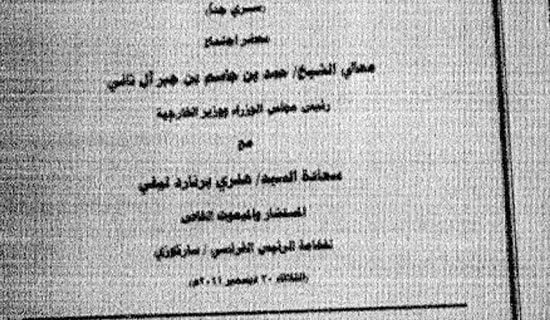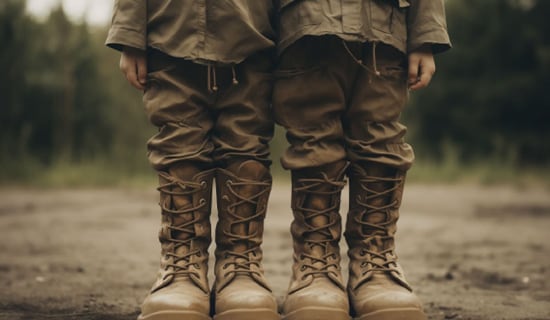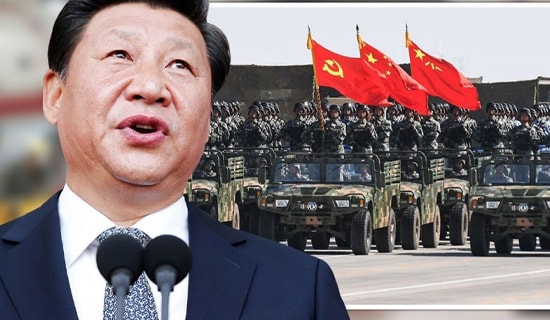Introduction
Two days after thousands rallied in mass demonstrations against the Iranian regime,[1] and in light of the unflinching resolve of protest movement leaders Mir Hossein Mousavi and Mehdi Karroubi, the regime drew a line in the sand, announcing a "day of rage and disgust" against the movement leaders, to commence February 18, 2011 after the Friday sermon and prayers.
The regime called on the Iranians "to join forces in a demonstration of hatred and disgust of the barbaric crimes of the "incitement leaders and their hypocrite allies," thus labeling Karroubi – who has stated that he is willing to pay any cost for his struggle, even hinting at his life[2] – and Mousavi – who was unwilling to renounce the demonstrators – as hostile elements.
The protest movement, for its part, called on its followers to fill the streets on February 20, in protest against the religious tyranny in Iran.
Khamenei Institutionalizes Delegitimization of Karoubi and Mousavi, While Attempting to Contain Public Rage against Them
The regime's announcement suggests that Supreme Leader Ali Khamenei has decided to institutionalize the campaign against the protest movement leaders while controlling in the level of public rage against them.[3]
This enables him to operate on two levels: on the one hand, the regime is calling the shots in dealing with those who challenge it, and has launched an active campaign of public incitement and delegitimization against the protest movement leaders; on the other hand, the regime is keeping the movement leaders under house arrest, thus protecting them from the rage of the public and ensuring that they do not become martyrs for their followers, which could spark a fresh wave of mass riots like those that swept Iran in
Rafsanjani Condemns Protest Movement, Calls on Regime Not to Ostracize His Colleagues
It should be noted that, so far, none of the key figures of the protest movement (Mousavi, Karroubi, Khatami, and Hashemi Rafsanjani, who is the movement's primary backstage player) has spoken out against Khamenei's regime or against the Rule of the Jurisprudent. The movement leaders have focused their demands on repeat presidential elections, the release of political prisoners, and freedom of speech and of the press. In fact, apart from Karroubi and Mousavi, the regime's critics, headed by Rafsanjani, are now openly expressing their support for Khamenei and President Ahmadinejad, and renouncing the protest movement.[5]
As chairman of the Expediency Council, which oversees the operations of the regime and its leader, Rafsanjani accepted Khamenei's authority and issued a statement in the name of the council, which met in his office on February 16, condemning the protest movement's February 14 demonstration. The statement declared that this "American-Zionist" demonstration, held on the pretext of showing support for the popular uprisings in Tunisia and Egypt, had once more exposed the "disgraceful anti-Islamic identity" of the protest movement, and had proved it to be an opposition movement that must be renounced. The statement praised the Iranian public for disregarding the movement's calls to demonstrate, and called on the people to obey Khamenei.[6]
SUPPORT OUR WORK

Similarly, in a February 16 interview on Iranian state television, Rafsanjani called on the Iranian public to obey the law and to unite against the schemes of Iran's enemies, since "this is no time for ostracizing [people] and disputing."[7] It would appear as though Rafsanjani's choice to address the Iranians on the air was aimed both at clearing his name and at defending his colleagues in the protest movement, after estimating that his hitherto reserved support for the protest movement was likely to cost him his life – especially in light of the fact that, over recent months, senior regime officials have escalated the campaign of incitement against him. [8]
The pro-Ahmadinejad website Inn.ir claimed that Rafsanjani's statements reflected his long-standing ambivalence vis-à-vis the protest movement. The website assessed that, in saying that now was not the time for disputes, Rafsanjani had been urging to stop calling for the execution of the protest movement leaders.[9]
Protest Movement Calls for Demonstrations on February 20 against Religious Tyranny in Iran
The protest movement's coordination committee called on the Iranian public to participate in demonstrations it planned to stage in Tehran and throughout Iran on February 20, in a "fight against the religious tyranny" implemented by the Iranian regime, and in memory of the two demonstrators killed in the February 14 demonstrations.[10]
Tahkim-e Vahdat, Iran's university student movement, also announced a week of mourning for the two protest movement supporters killed in the demonstrations, and warned the regime against harming Mousavi or Karroubi.[11]
* A. Savyon is Director of the Iranian Media Project; Y. Mansharof is a research fellow at MEMRI.
[1] The daily Al-Sharq Al-Awsat, citing sources in the Iranian protest movement organization Mujahideen-e Khalq, reported that despite the regime's claim that only two people had been killed during the demonstrations, the dead in fact numbered in the dozens. Al-Sharq Al-Awsat (London), February 17, 2011. In addition, human rights activists claimed that far more protestors had been arrested than reported by the regime – 1,500 in Tehran alone. www.mardomak.biz, February 15, 2011.
[2] On February 17, 2011, Karroubi announced that he was prepared to submit to public law. Saham News (Iran), February 17, 2011.
[3] Expressions of this rage were numerous. On February 15, a day after the protest movement's demonstrations, dozens of Majlis members called for Mousavi and Karroubi to be executed. See MEMRI Blog, "Iranian Majlis Speaker Calls to Prosecute Mousavi, Karroubi; Activists Call to Continue the Protests," February 15, 2011, http://www.thememriblog.org/iran/blog_personal/en/34512.htm. Ahamad Khatami, a senior regime official and prayer leader in Tehran, called for Mousavi and Karroubi to be prosecuted, warning Hashemi Rafsanjani to choose his side. To view Khatami's address, visit MEMRI TV Clip No. 2811, "Iranian Ayatollah Ahmad Khatami Accuses America and the Zionists of Being the 'Real Instigators' of the Riots and Calls to Deal with Oppositionists 'Harshly and in a Legal Manner,'" February 15, 2011, http://www.memri.org/legacy/clip/2811; see also MEMRI Blog, February 16, 2011, "Two Dead In Iran Protests; Karroubi: I'm Ready To Pay Any Price For My Struggle," http://www.thememriblog.org/blog_personal/en/34578.htm . Iranian Chief of Staff Hassan Firouzabadi said that the February 14 demonstration was a new addition to the protest movement leaders' long list of crimes, and one which the Iranian nation could not tolerate. He said that so far the Iranians had waited patiently for the movement leaders to be brought to trial, but now their patience had run out. www.daneshjoonews.com, February 16, 2011. On February 15, the Iranian website Voice of the Revolution launched a campaign to collect signatures for a petition for Mousavi, Karroubi, and Khatami's execution. The petition demanded that the regime not wait any longer, and added that the regime must execute the protest movement leaders in order to restore calm to Iranian society and honor to its name. http://nedayeenghelab.com/index.php?option=com_content&view=article&id=4802&Itemid=862, February 15, 2011.
[4] Mehr (Iran), February 16, 2011. The website Nedayeenenghelab also published photos of Mousavi, Karroubi, and Khatami being hanged, stated that there was no longer any doubt about their betrayal, and asked whether this would be done soon. http://nedayeenghelab.com/index.php?option=com_content&view=article&id=4803:1389-11-26-08-48-14&catid=103:-2&Itemid=795
[5] The stance of former president Muhammad Khatami, who is currently under house arrest, remains unclear.
[6] Mehr (Iran), February 16, 2011. It should be noted that, in addition to Rafsanjani, the rest of Ahmadinejad's critics also condemned the protest movement demonstration. Hassan Rohani claimed that it was meant to distract the public from the true enemy, namely, the U.S. and Israel. He called on the Iranians to obey Khamenei and to judge the anti-national and anti-Islamic movement harshly. ILNA (Iran), February 16, 2011. Nateq Nouri, another of Ahmadinejad's critics, likewise renounced the demonstration, which he said provided the enemy with ammunition against Iran and Islam. He condemned the protest movement for standing in opposition to the Iranian nation and regime, and said that, though there were disputes from time to time among the regime factions, they were united in their concern for Iran's national interests and in their loyalty to Khamenei. Asr-e Iran (Iran), February 16, 2011. Tehran Mayor Mohammad Baqer Qalibaf called the demonstration "satanic," and harshly attacked Mousavi. Fars (Iran), February 16, 2011.
[7] Mehr (Iran), February 16, 2011.
[8] It should be noted that during a speech in which senior regime official Ahmad Khatami condemned Mousavi and Karroubi, demonstrators demanded, in a live broadcast, that Rafsanjani be executed. Khabaronline.com, February 16, 2011. It has also been reported that on the nights of February 16 and 17, several dozen people demonstrated outside Khatami and Rafsanjani's adjacent homes in Tehran's Jamaran neighborhood. Ayande News (Iran), February 17, 2011; Khabaronline.com, February 18, 2011.
[9] www.inn.ir, February 16, 2011.
[10 Kaleme (Iran), February 17, 2011.
[11] Saham News (Iran), February 17, 2011.




